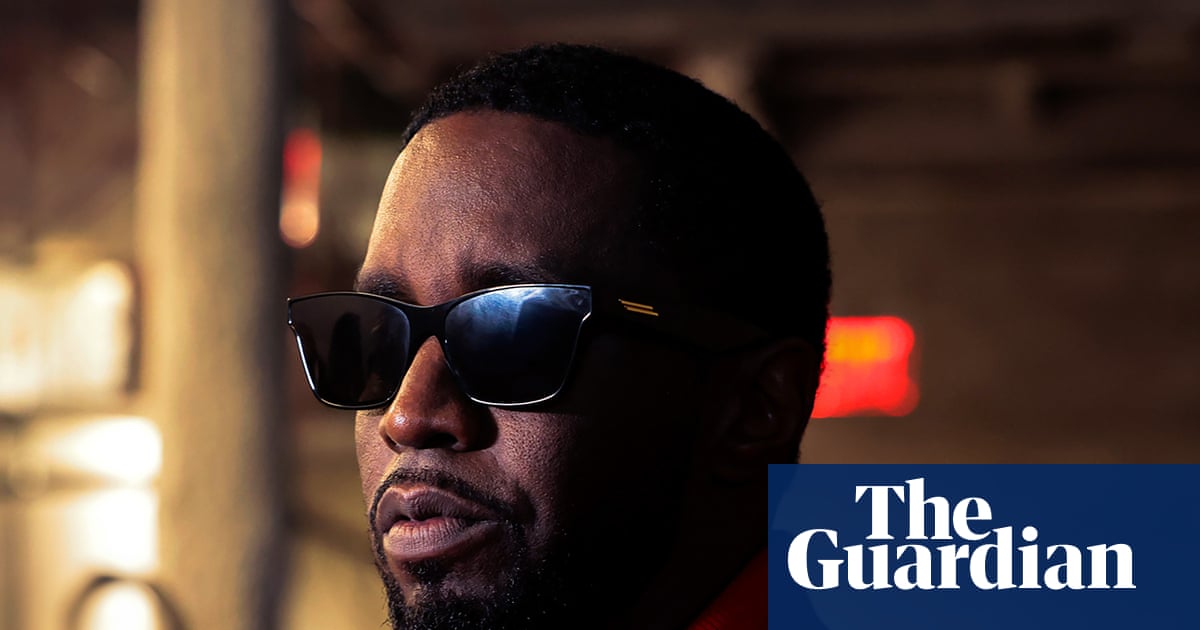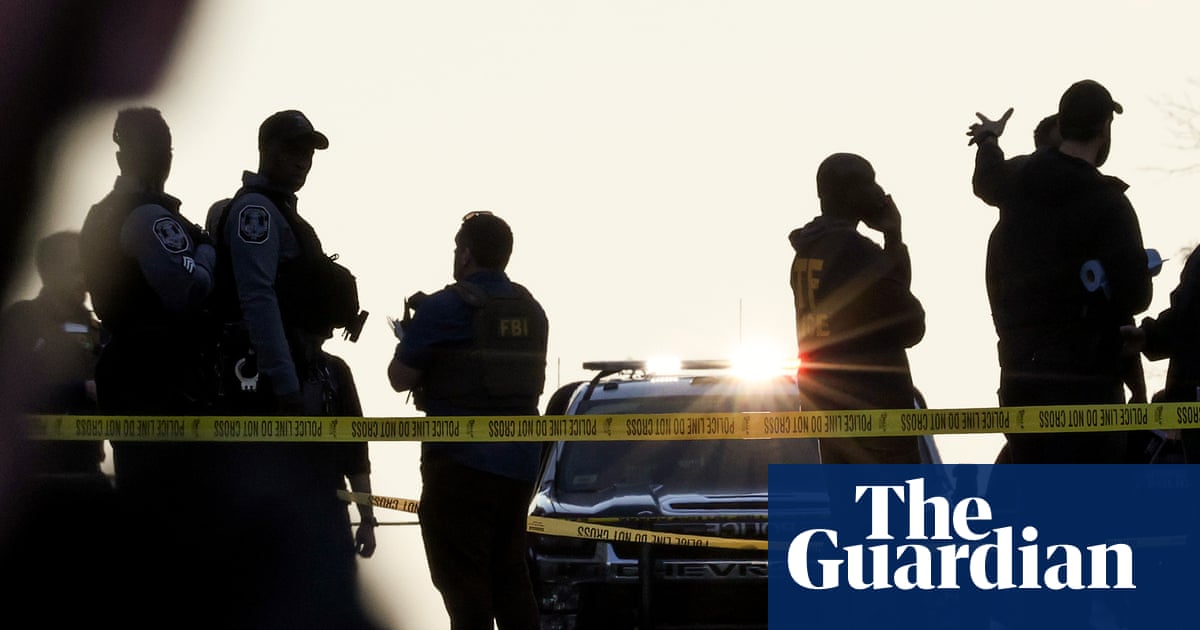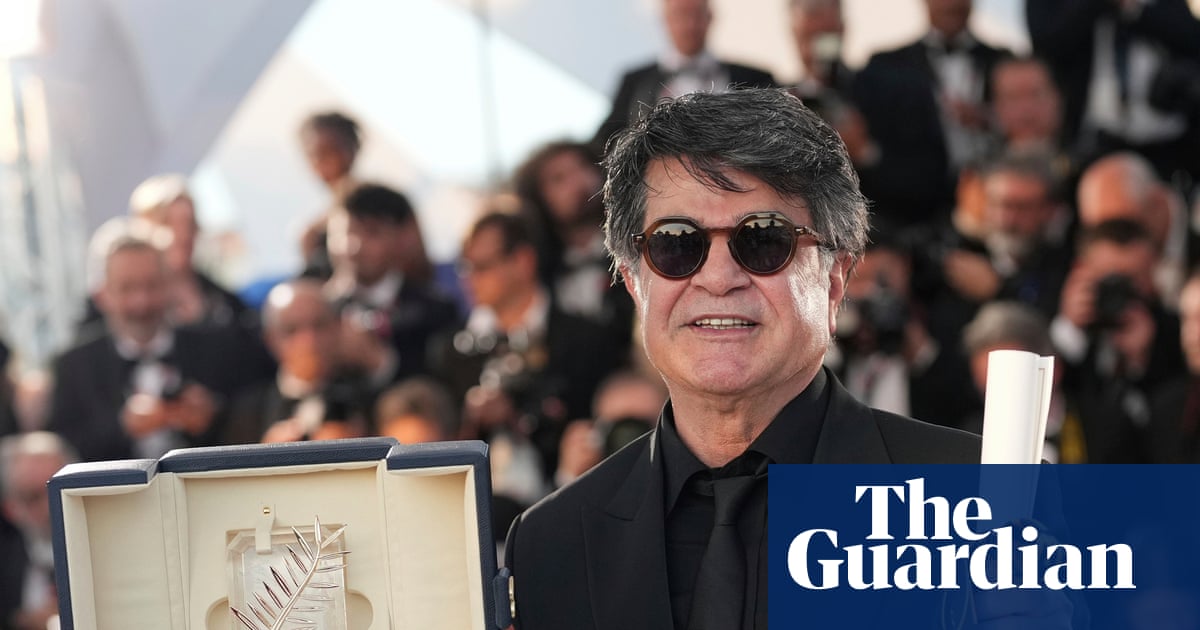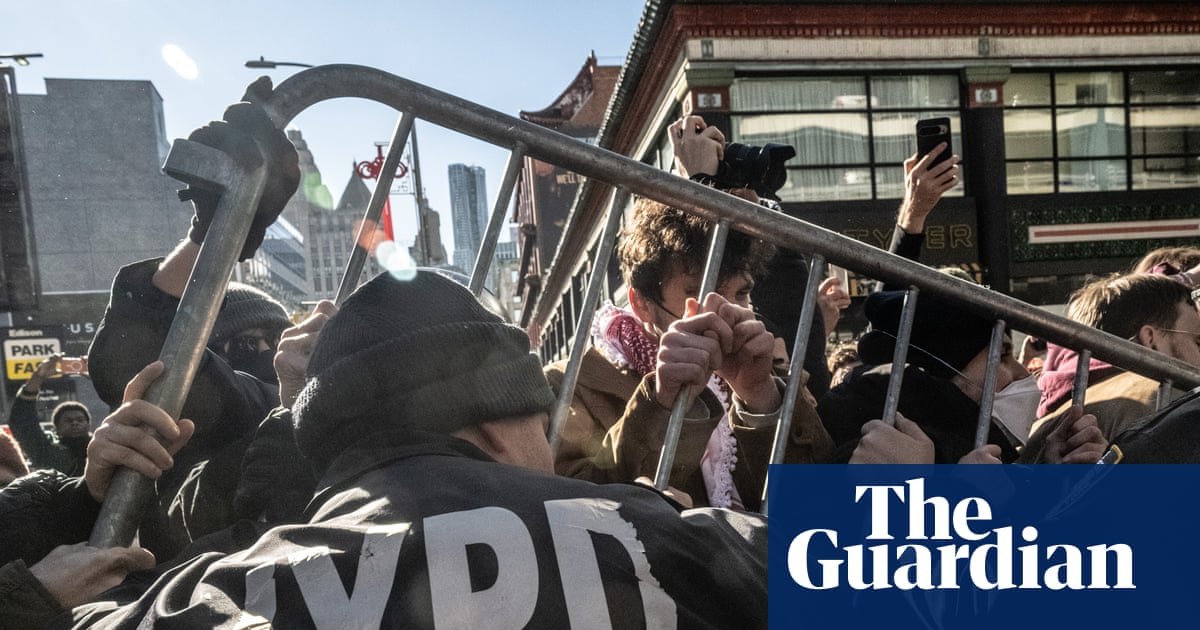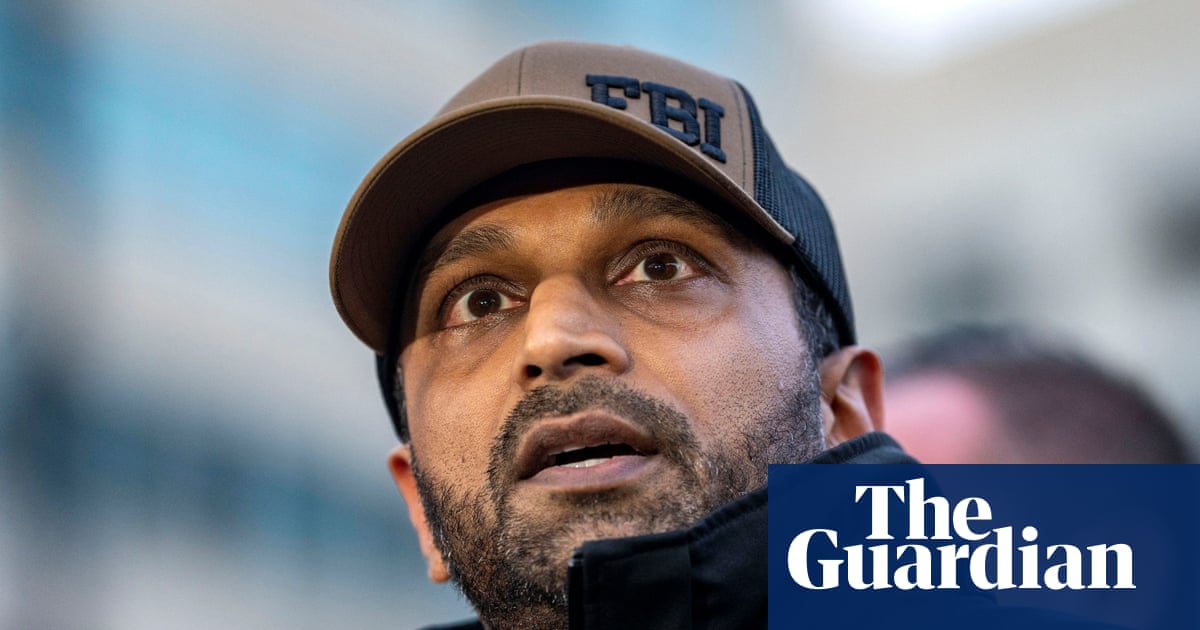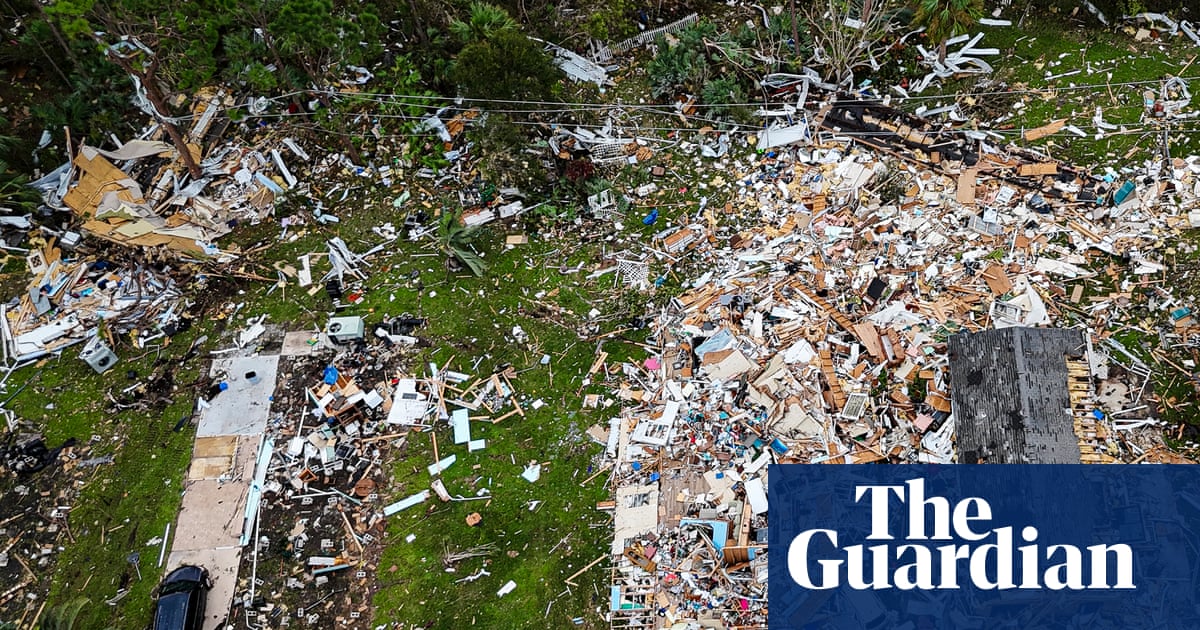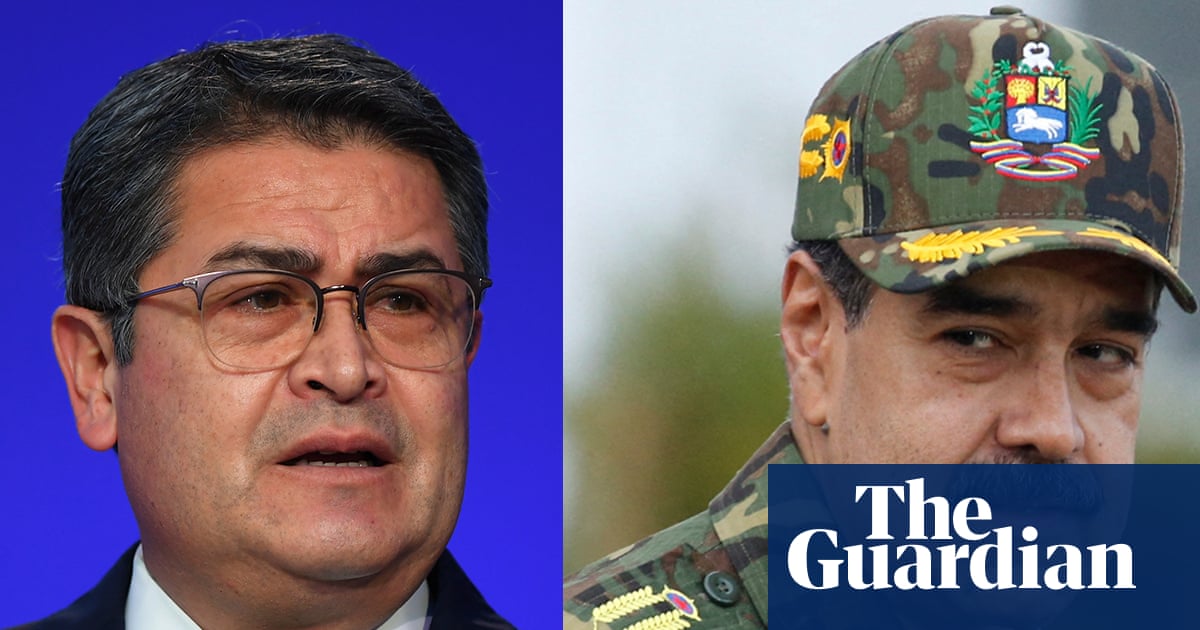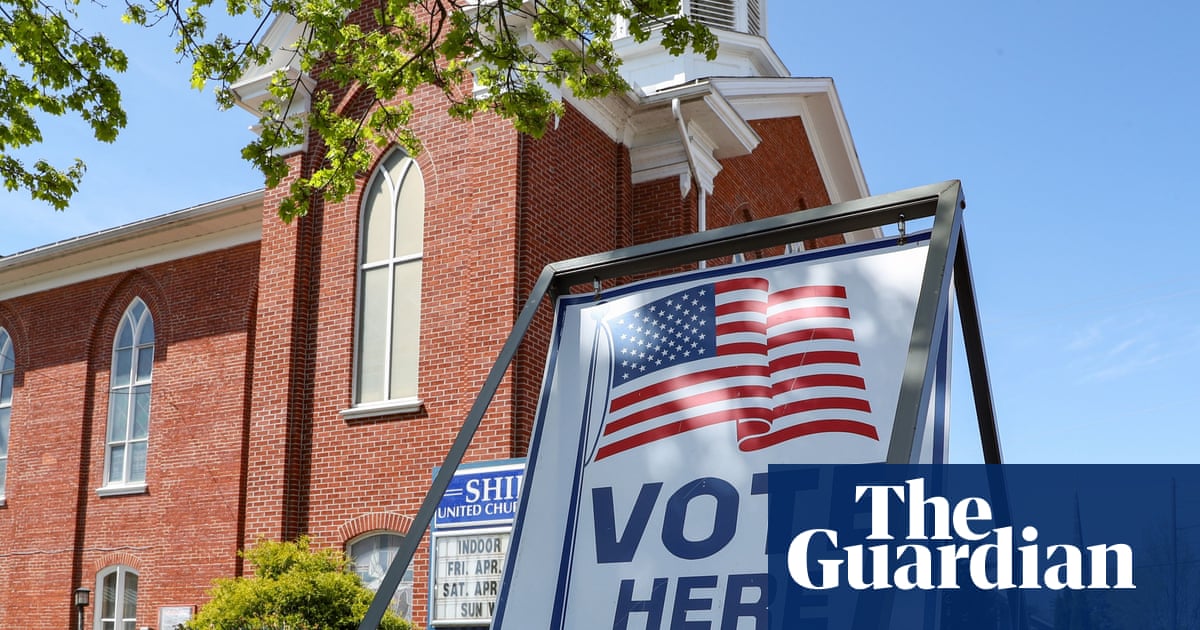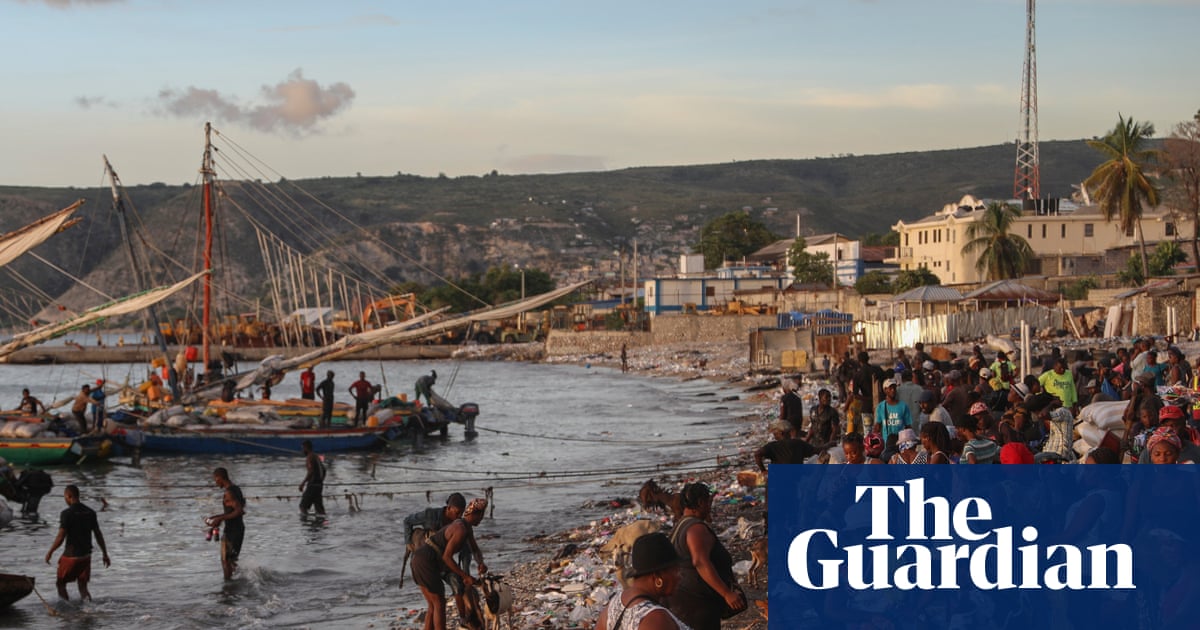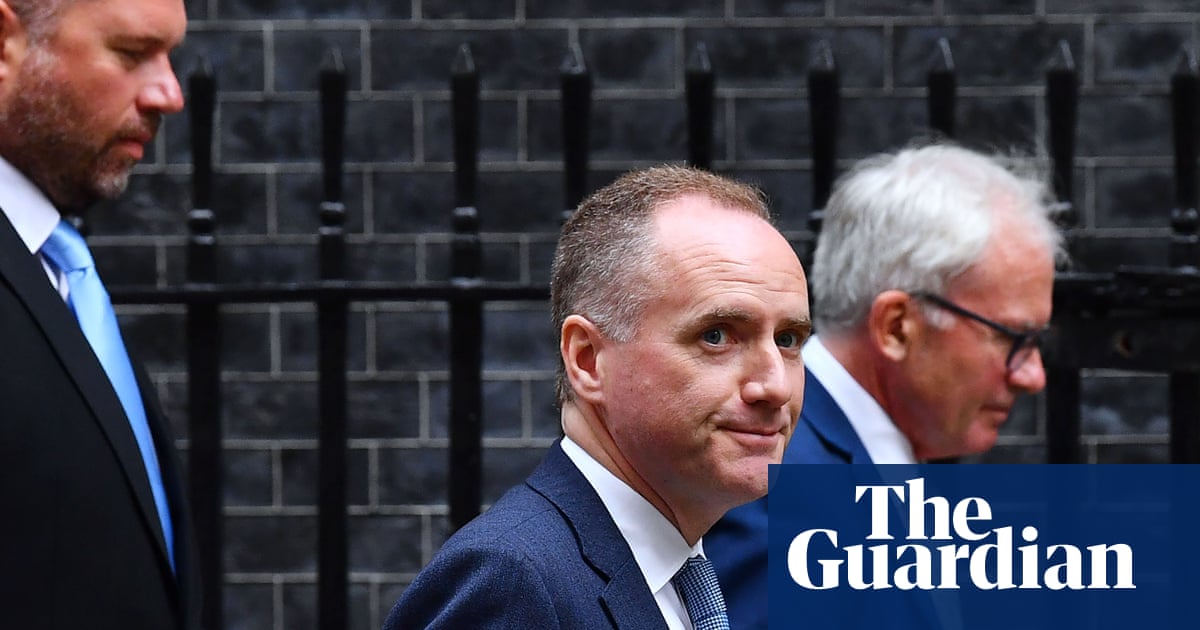Catholic parishioners rushed to deliver food boxes to immigrants too terrified to leave their homes in the California city of Coachella after federal immigration agents swept through Latino neighborhoods during the summer.
Just south of Arizona’s border in Nogales, Mexico, Catholic nuns, laypeople and volunteers at the Kino Border Initiative, despite rising threats against aid workers, cook and serve two meals daily for immigrants who have been deported or lost their chances at US asylum in Donald Trump’s crackdown.
And in El Paso, Texas, about three dozen people from an interfaith group routinely gather outside a federal building to pray for immigrant families. The volunteers monitor immigration court hearings held inside. If their cases are denied, as most are, many immigrants face detention by US immigration agents waiting in adjacent hallways.
“Catholic social teaching is on the side of the immigrant,” explained the Rev Raymond Riding, a Catholic missionary in Tucson, Arizona, who has been ministering to relatives of detained immigrants.
US cities along the south-west border offer lessons to cities like Chicago, Portland and New York City on how to respond to the immigration dragnet by supporting immigrant families and protecting against what Pope Leo XIV, who was born in Chicago, called “inhuman” treatment of immigrants. Pope Leo, who was elected in May to succeed Francis, has said immigrants should be treated with dignity and respect and has called mass deportations “a major crisis”.
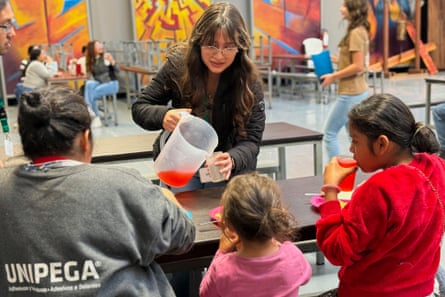
Across the country, faith groups have formed a defense team for immigrants, at a time of rising pressures to remove them, and have essentially created an underground railroad of help to uphold church teachings. Some of these rapid response teams are very public. Others are not, noting the sharp risks, even dangers faced, over protecting immigrants. Some priests have been celebrating mass online for immigrants too scared to leave homes.
Many were shocked by video that surfaced in early October that showed a Presbyterian pastor hit by a pepper ball in the head while protesting outside an Ice facility in a Chicago suburb. The incident involving Rev David Black stoked further drama when the Department of Homeland Security defended the action by calling protesters “agitators” who blocked an Ice vehicle, impeding operations.
‘Ice agents are doing the Lord’s work’
Asked on CNN’s State of the Union Sunday news program this month about the aggressive incident targeting the pastor, a journalist and residents, the US representative Jim Jordan, chair of the House judiciary committee, largely defended the moves. His committee oversees immigration policy, among other issues.
“We’ll look into all this,” the Ohio Republican said. “But I think the Ice agents are doing the Lord’s work.”
Some Catholics, notably JD Vance, support the immigration crackdown and have condemned US bishops for not backing the administration’s enforcement actions.
The pope has held his ground. Recently, the pontiff said during a meeting with the United States conference of Catholic bishops that he wished the bishops were “stronger in their voice”.
The El Paso bishop Mark Seitz, the chair of the committee on migration within the US conference of Catholic bishops, has long been an outspoken critic.
The pope was moved when Seitz presented him letters and a video that captured the anxieties of people facing deportation, according to members of an El Paso delegation following the meeting in early October at the Vatican. “It’s so important that we as a church give a message of hope in the midst of these horrible struggles, what’s going on in so many cities in the United States right now. At least the church cannot be silent,” the pope told the El Paso delegation, according to a video of the meeting provided by the Hope Border Institute, whose leader attended the meeting.
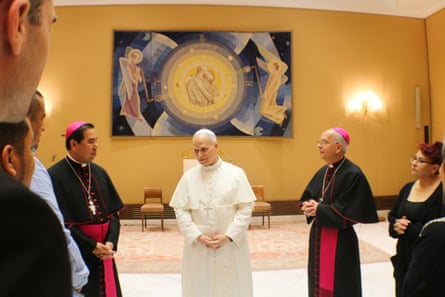
Days after meeting with the pope, Seitz stood before union leaders, immigrant advocates, aid groups, political leaders and students and called on churches and non-profit groups along the border to stand up for poor people and immigrants.
“What has happened to our heart?” he asked. “Today in the country and the world, I wonder whether we can even recognize our country, because we were founded on these principles and our Lady of Liberty has stood where so many of our immigrants have entered as a sign of hope, as a place of justice.”
Parish pain
Roman Catholicism remains the largest faith among US Latinos, the largest minority group targeted by immigration agents. The deportation crisis has hit immigrants with force, traumatizing children and parents alike all along the heavily Latino US borderlands and beyond.
“In some cases, it’s fear,” says the archbishop Gustavo García-Siller in San Antonio. “In many cases, it’s terror.”
About 1.4 million immigrants have left the US since Trump returned to power, according to a new study from the Pew Research Center. The decline contrasts starkly with immigrant population increases over five decades.
The dragnet first hit the Los Angeles region, sparking panic and protests. After immigrants were detained outside two parish churches in his diocese east of Los Angeles, the San Bernardino bishop Alberto Rojas spoke out.
“I say once again to our immigrant communities who are bearing the trauma and injustice of these tactics that your Church walks with you and supports you,” Rojas said in a 23 June letter. “We join you in carrying this very difficult cross.”

Rojas has temporarily allowed people to skip Sunday mass because they’re afraid to go out. Some are living their faith in other ways.
At Our Lady of Soledad parish in the southern California city of Coachella, parishioners and a community non-profit continue to make deliveries to immigrants wary of wandering outside.
“There are still a lot of people who aren’t leaving home to buy groceries, they aren’t sending their children to school,” said Francisco Gómez, the parish priest. “The kids don’t want to go to school because they are afraid they’ll come home and Mom and Dad won’t be there.”
In San Diego, the bishop Michael M Pham signaled his support in June by leading other clergy to local immigration courts. The first Vietnamese American US bishop, Pham fled Vietnam as a 13-year-old and was only recently named to his post by Pope Leo XIV.
Dozens of clergy members and laity from several faith traditions have since shown up to attend court hearings as witnesses.
From court monitoring to suicide prevention
In Nogales, Mexico, which shares the border with an Arizona city of the same name, Catholic nuns, lay people and volunteers serve meals to immigrants at the Catholic-run Kino Border Initiative, which also has a shelter and legal and other services.
Other faiths have joined the effort, of course.
In El Paso, the Rev Marta Pumroy with the Tres Rios Presbyterian Border Foundation recently led dozens of people outside the federal building in song and prayer during an interfaith vigil. Some of the group then went inside to monitor immigration court proceedings.
“Having people speak about it and watch it and witness it, [to] share those stories, starts restoring and building that humanity,” Pumroy said.
One of them, Bonnie Daniels, said she attends the court hearings three or four times a week. She recently witnessed a man facing return to his native Venezuela who asked how to reach the top of the seven-story court building. He wanted to jump, she said.
“Thankfully, the nuns talked him out of it,” Daniels said.
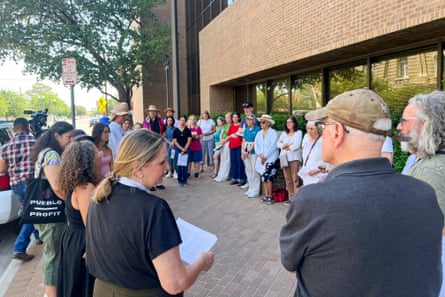
One of those nuns was Leticia Gutiérrez Valderrama, director of the El Paso diocese’s Migrant Hospitality Ministry. While desperation is rife, many with court hearings find strength in their faith, Gutiérrez said.
“People don’t lose their faith,” she said. “On the contrary. They ask God to be with them as they make their court appearances.”
Along with spiritual support, the nuns and other volunteers provide practical help to prepare families for what could happen. They ensure that relatives have the immigrants’ contacts and relevant documents and know how to find them if they are detained, Gutiérrez said.
Another volunteer, Dee Anne Croucher, has witnessed the arrest of mothers with children.
“Even when the mom breaks down crying and they’re taking her away and the children are all marching by her side,” Croucher said. “I don’t think they really understand what’s happening.”
St Toribio Romo, immigrant protector?
The El Paso first auxiliary bishop Anthony Celino recently stood under the high arches of St Patrick’s cathedral reading aloud scripture about welcoming the stranger.
“As people of faith, we are facing this and similar dire situations caused by racism that has penetrated our culture and our public policies,” Celino told the gathering, incense thick in the air. “It’s as if our country is at war against the poor and the refugees. We cannot remain silent.”
As the service ended, people were given cards, written in English and Spanish, explaining the constitutional rights of immigrants and how to respond to immigration agents if questioned.
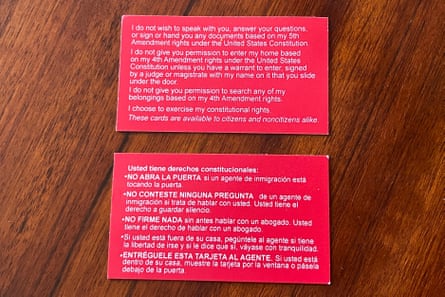
In downtown Dallas, at the National Shrine Cathedral of Our Lady of Guadalupe, the rector, Rev Jesús Belmontes, said he’s often asked by parishioners for letters attesting to the good character of immigrants held in detention.
In the cathedral gift shop, among the many prayer cards for sale are some featuring Saint Toribio Romo, a Mexican priest who died in 1928 and is revered as a patron saint of immigrants. Some believe the canonized priest can render immigrants invisible to US agents.
Belmontes said there’s nothing political about his support of immigrants. “This isn’t about being Republican or Democratic. This is justice,” Belmontes said.
This story was co-published with Puente News Collaborative, a bilingual non-profit newsroom, convener and funder dedicated to high-quality, fact-based news and information from the US-Mexico border

 1 month ago
24
1 month ago
24
